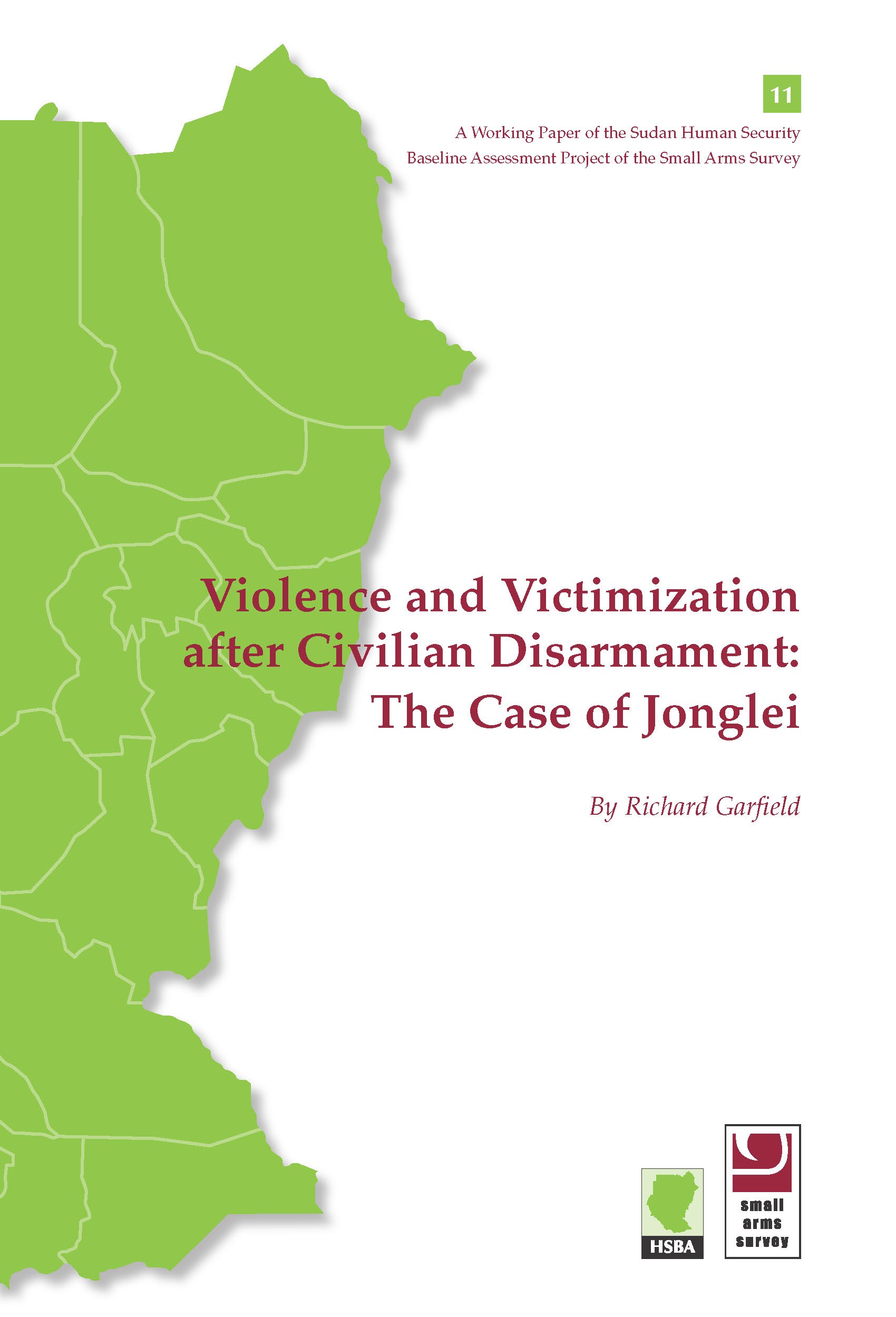
Violence and Victimization after Civilian Disarmament: The Case of Jonglei (HSBA Working Paper 11)
Although almost three years have passed since the Comprehensive Peace Agree-ment (CPA) ended the second North–South Sudanese civil war (1983–2005), security has not improved demonstrably in many areas of the South. On the assumption that small arms and light weapons are one source of ongoing inse-curity, the Government of South Sudan (GoSS) and the Sudan People’s Lib-eration Army (SPLA) have administered or allowed a series of coercive and voluntary civilian disarmament efforts. The absence of reliable evidence and baseline data has prevented an accurate assessment of the outcomes of these activities.
This working paper reports findings of a victimization survey under-taken in Jonglei State, South Sudan, where both coercive and ‘voluntary’ dis-armament occurred. It finds that violent victimization remains prevalent since the CPA. Nevertheless, residents of Jonglei who had undergone disarmament by the time of the survey reported a considerable reduction in weapons carry-ing, an increase in perceived security, and reliance on public authorities. These positive changes are remarkable in light of serious problems associated with the disarmament process in some areas, including violence and significant loss of life.